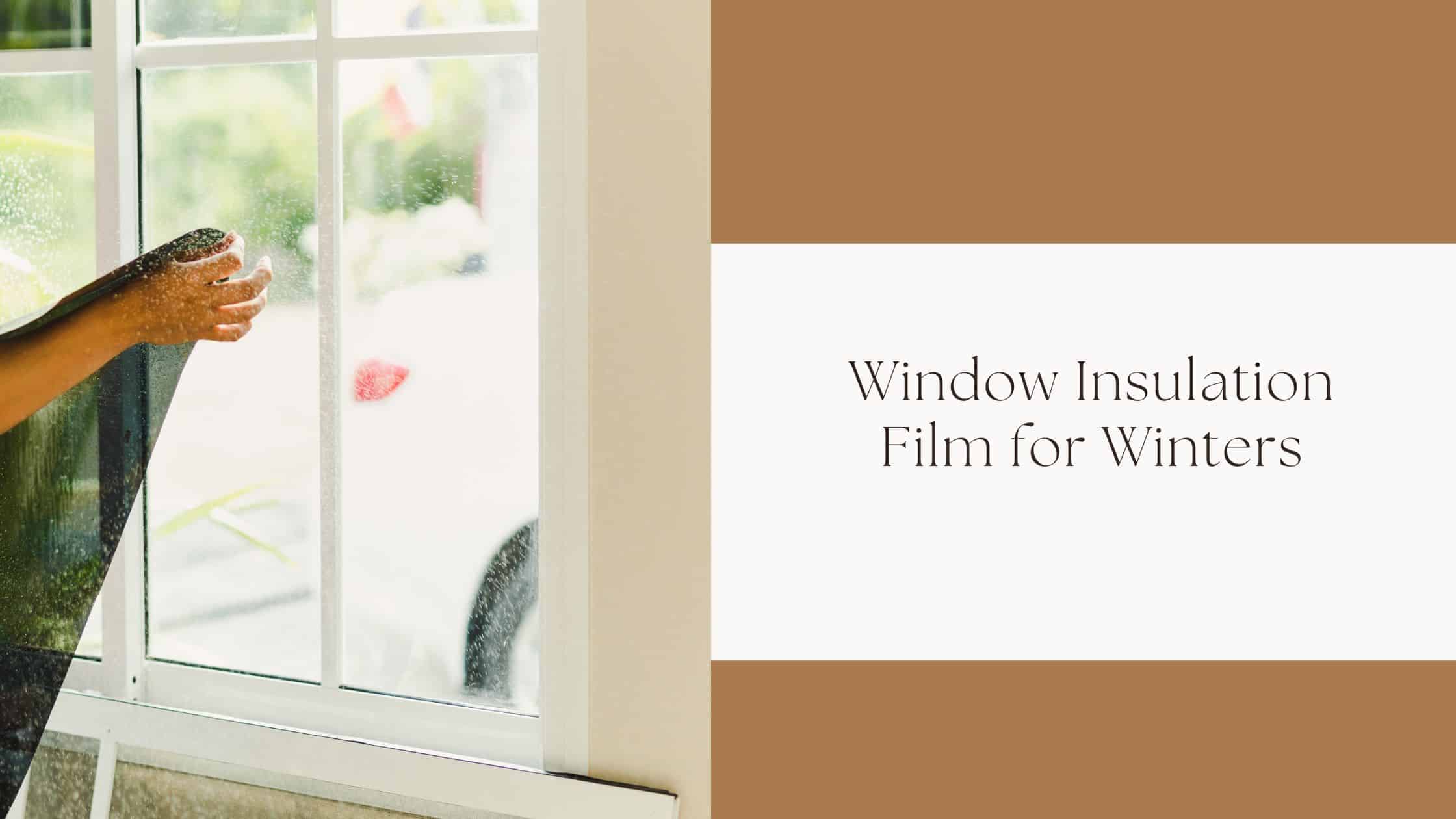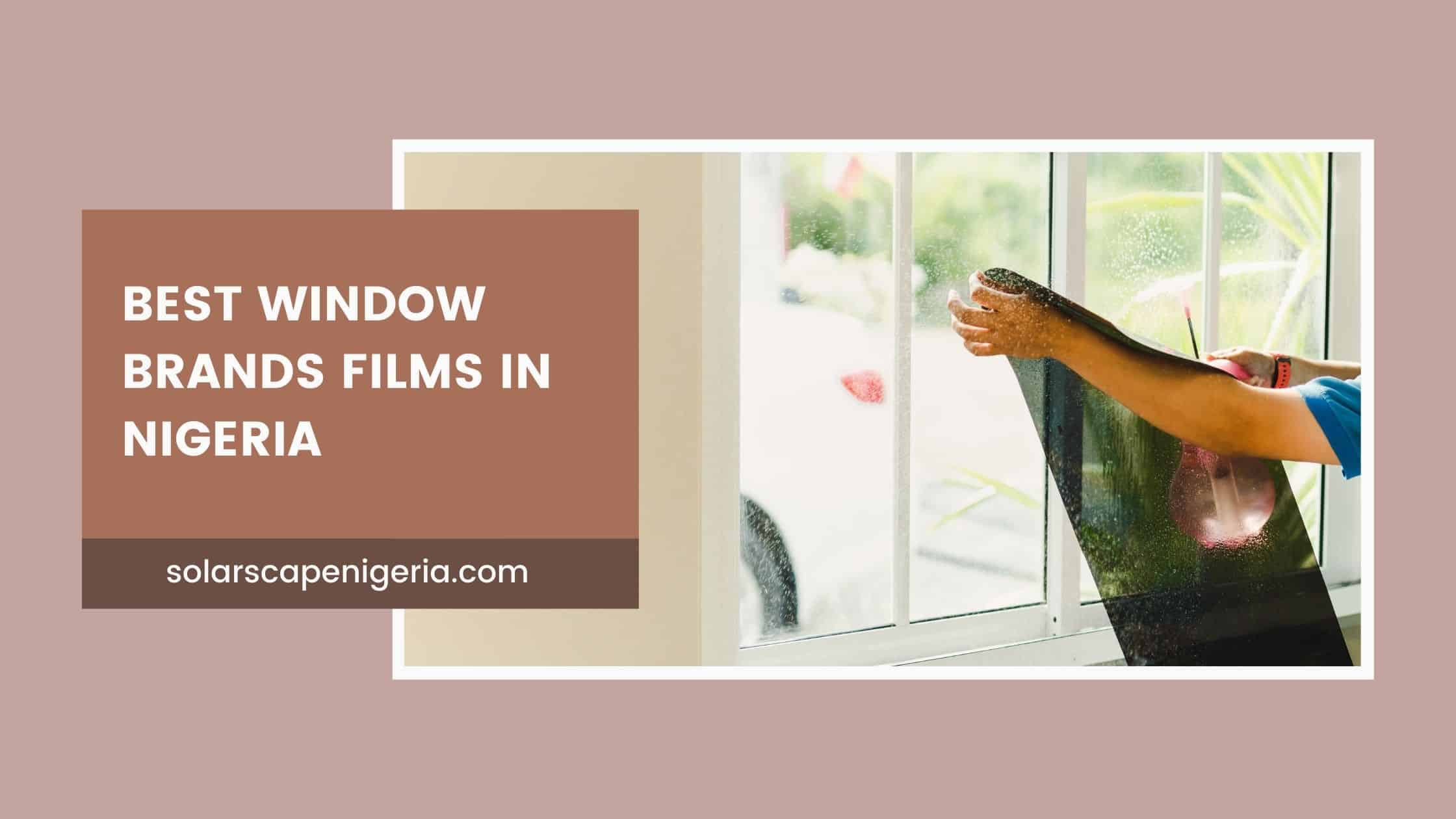When it comes to addressing climate change and reducing carbon emissions, it’s crucial that we examine all aspects of our daily lives, including the buildings we inhabit. Commercial buildings, in particular, account for a significant portion of energy consumption and greenhouse gas emissions. Therefore, finding innovative solutions to improve energy efficiency and reduce carbon footprint in these structures is of utmost importance.
One often overlooked yet highly effective method for achieving these goals is through the installation of window films. These thin, transparent coatings offer multiple benefits ranging from improved insulation to enhanced aesthetics. In this blog post, we will delve into the advantages of window films in commercial buildings, exploring how they can help improve energy efficiency, reduce carbon footprint, and create more sustainable structures.
Understanding Energy Conservation in Commercial Buildings
Before discussing the role of window films in reducing energy consumption, let’s first understand the importance of energy conservation in commercial buildings. These structures consume a significant amount of energy, primarily for heating, cooling, and lighting purposes. The energy required to maintain the desired indoor environment accounts for a substantial portion of the overall carbon emissions associated with these buildings.
By focusing on energy conservation, architects and builders can help minimize the environmental impact of commercial structures while also reducing operating costs for building owners. Implementing energy-efficient measures not only benefits the environment but also creates more comfortable, sustainable spaces for occupants.
The Role of Window Films in Energy Efficiency
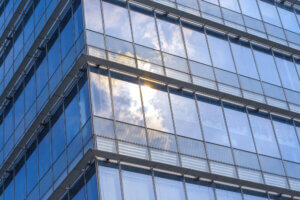
Windows play a crucial role in the thermal performance of commercial buildings. They allow natural light to enter while also providing views, ventilation, and a connection to the outdoor environment. However, windows can also be a significant source of energy loss and heat gain, especially in older buildings or those with inefficient glazing systems.
This is where window films come into play. These thin, adhesive coatings can be applied directly to the surface of existing windows. Window films work by modifying the way windows interact with heat, light, and airflow.
Enhanced Insulation and Heat Retention
Window films can significantly improve the insulation properties of windows, helping to reduce heat transfer between the building’s interior and exterior. The films act as a barrier, preventing heat from escaping during winter months and entering during the summer.
By minimizing heat loss and gain through windows, the building’s heating, ventilation, and air conditioning (HVAC) system can operate more efficiently, resulting in lower energy consumption and reduced carbon emissions.
Solar Control and Glare Reduction
Excessive solar heat gain and glare can lead to discomfort for occupants, especially in commercial spaces with large windows. Window films offer effective solar control by reflecting a portion of the sunlight and solar heat, reducing the need for artificial cooling and minimizing reliance on HVAC systems.
Additionally, these films can help reduce glare, creating a more comfortable and productive environment for employees, customers, or clients. By harnessing the power of natural light while minimizing its negative effects, window films contribute to energy conservation and improved well-being.
UV Protection and Furnishing Preservation
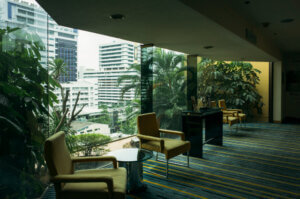
Another advantage of window films is their ability to block harmful ultraviolet (UV) rays. UV radiation not only poses health risks to occupants but also contributes to the fading and deterioration of furniture, fabrics, and artwork within the building.
Window films can significantly reduce UV exposure, providing protection for both people and interior furnishings. By preserving the condition and longevity of furnishings, building owners can reduce waste and promote sustainability.
Enhanced Security and Privacy
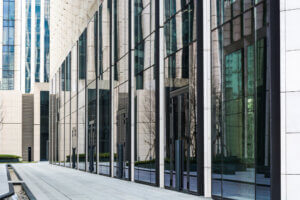
Window films also offer enhanced security and privacy benefits for commercial buildings. These films can make windows more resistant to shattering, acting as a protective barrier against potential break-ins or accidents. By strengthening the windows, the need for additional security measures, such as bars or shutters, may be reduced, maintaining the aesthetic appeal of the building.
Furthermore, specific types of window films, such as frosted or tinted films, can provide privacy to certain areas of the building without sacrificing natural light. This privacy feature can be particularly valuable in settings such as conference rooms, offices, or waiting areas.
The Environmental Impact of Window Films
Beyond the direct energy-saving benefits, window films also have a positive environmental impact on a broader scale. By improving the energy efficiency of commercial buildings, these films contribute to the reduction of greenhouse gas emissions, helping combat climate change.
The decreased energy demand resulting from window film installations directly reduces the reliance on fossil fuel power generation. The less energy required to heat, cool, and illuminate commercial spaces, the lower the overall carbon footprint of the building.
Additionally, window films can extend the lifespan of HVAC equipment by reducing its workload. This not only saves energy but also decreases the need for frequent replacements, reducing the environmental impact associated with manufacturing and disposing of these systems.
Factors to Consider when Choosing Window Films

When considering window film installation for commercial buildings, several factors should be taken into account to ensure optimal results. Here are a few key aspects to consider when selecting window films:
Solar Heat Gain Coefficient (SHGC)
The SHGC measures how much solar radiation passes through a window film. Lower SHGC values indicate greater solar control, as less heat and sunlight penetrate the window. Choosing a window film with an appropriate SHGC can help regulate indoor temperatures and reduce cooling needs.
U-Factor and Insulation
The U-factor of window films indicates their insulation properties. Lower U-factor values signify better insulation. When aiming to improve energy efficiency, selecting window films with low U-factors can help reduce heat loss or gain, depending on the desired season.
Visible Light Transmission (VLT)
The VLT represents the amount of visible light that can pass through window films. While solar control is essential, maintaining natural light within commercial spaces is also crucial for the well-being and productivity of occupants. Balancing solar control with an adequate VLT can provide the best of both worlds.
Film Durability and Maintenance
Consider the long-term durability and maintenance requirements of the window films being considered. High-quality window films should be resistant to fading, peeling, or discoloration over time, ensuring a longer lifespan and a higher return on investment.
Also read- Transform Your Windows With Stunning Decorative Window Films
Conclusion
In the quest for sustainability and reduced carbon footprint, commercial buildings have a significant role to play. By incorporating energy-efficient technologies, such as window films, architects and builders can make a substantial impact on energy consumption and greenhouse gas emissions.
With their ability to improve insulation, control solar heat and glare, provide UV protection, enhance security and privacy, and reduce reliance on artificial lighting, window films offer a comprehensive solution for energy conservation in commercial buildings.
It is crucial for architects and builders to consider the various factors mentioned when selecting the right window films for a project. By choosing the appropriate films with favourable SHGC, U-factor, VLT, and durability, building professionals can ensure both energy efficiency and occupant satisfaction.
As the demand for sustainable commercial buildings continues to grow, window films present a viable and cost-effective solution to reduce energy consumption, improve thermal comfort, and contribute to a more sustainable future. By embracing this innovative technology, we can transform the way commercial buildings operate, benefitting both the environment and all the individuals who inhabit these spaces.
So why wait? Let’s take a step towards a greener future by installing window films in our commercial buildings and embracing the power of energy-efficient solutions.



